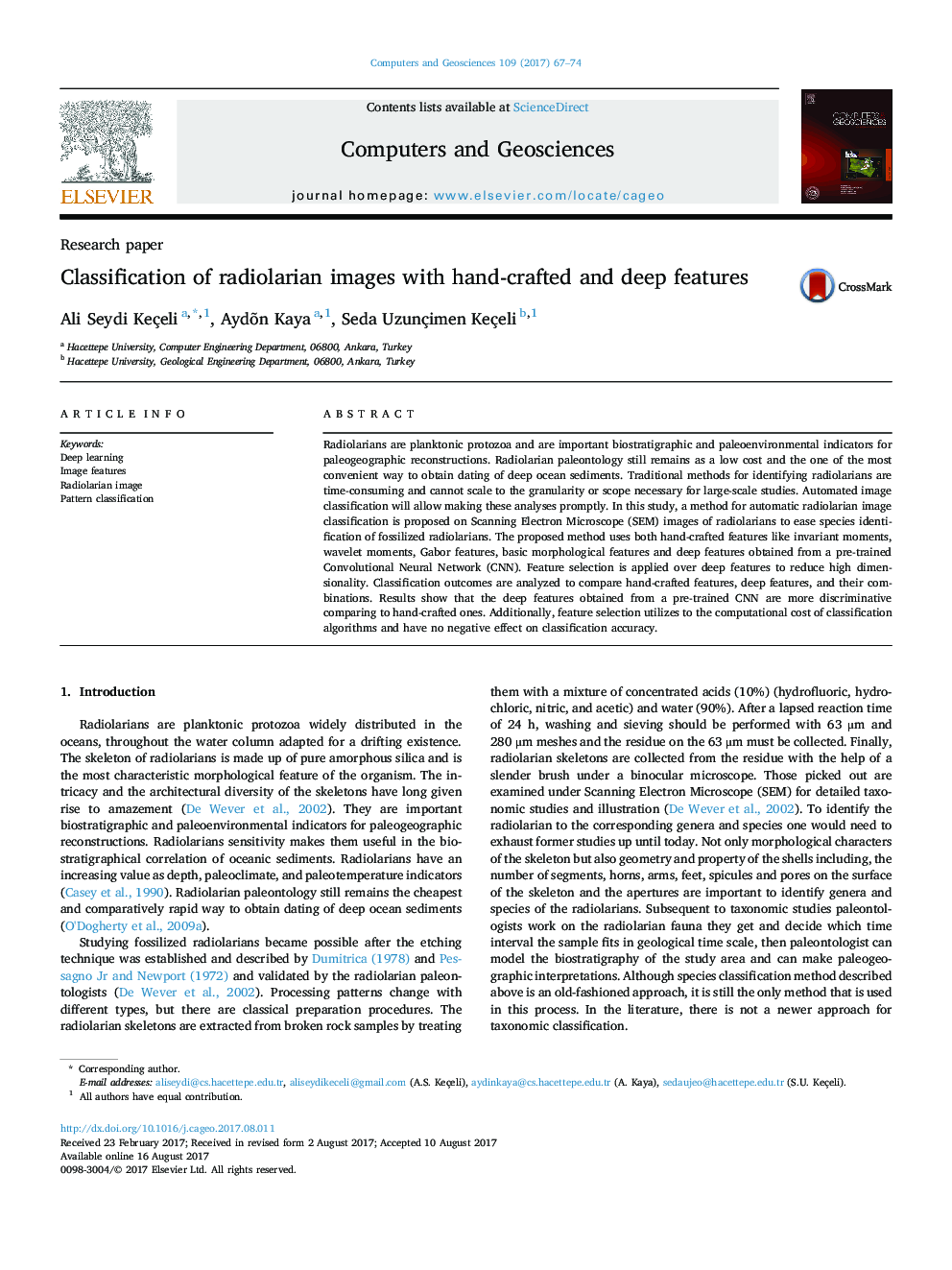| Article ID | Journal | Published Year | Pages | File Type |
|---|---|---|---|---|
| 4965351 | Computers & Geosciences | 2017 | 8 Pages |
Abstract
Radiolarians are planktonic protozoa and are important biostratigraphic and paleoenvironmental indicators for paleogeographic reconstructions. Radiolarian paleontology still remains as a low cost and the one of the most convenient way to obtain dating of deep ocean sediments. Traditional methods for identifying radiolarians are time-consuming and cannot scale to the granularity or scope necessary for large-scale studies. Automated image classification will allow making these analyses promptly. In this study, a method for automatic radiolarian image classification is proposed on Scanning Electron Microscope (SEM) images of radiolarians to ease species identification of fossilized radiolarians. The proposed method uses both hand-crafted features like invariant moments, wavelet moments, Gabor features, basic morphological features and deep features obtained from a pre-trained Convolutional Neural Network (CNN). Feature selection is applied over deep features to reduce high dimensionality. Classification outcomes are analyzed to compare hand-crafted features, deep features, and their combinations. Results show that the deep features obtained from a pre-trained CNN are more discriminative comparing to hand-crafted ones. Additionally, feature selection utilizes to the computational cost of classification algorithms and have no negative effect on classification accuracy.
Related Topics
Physical Sciences and Engineering
Computer Science
Computer Science Applications
Authors
Ali Seydi Keçeli, Aydın Kaya, Seda Uzunçimen Keçeli,
